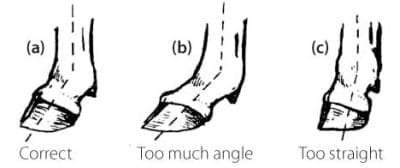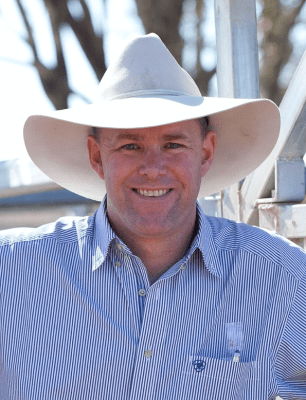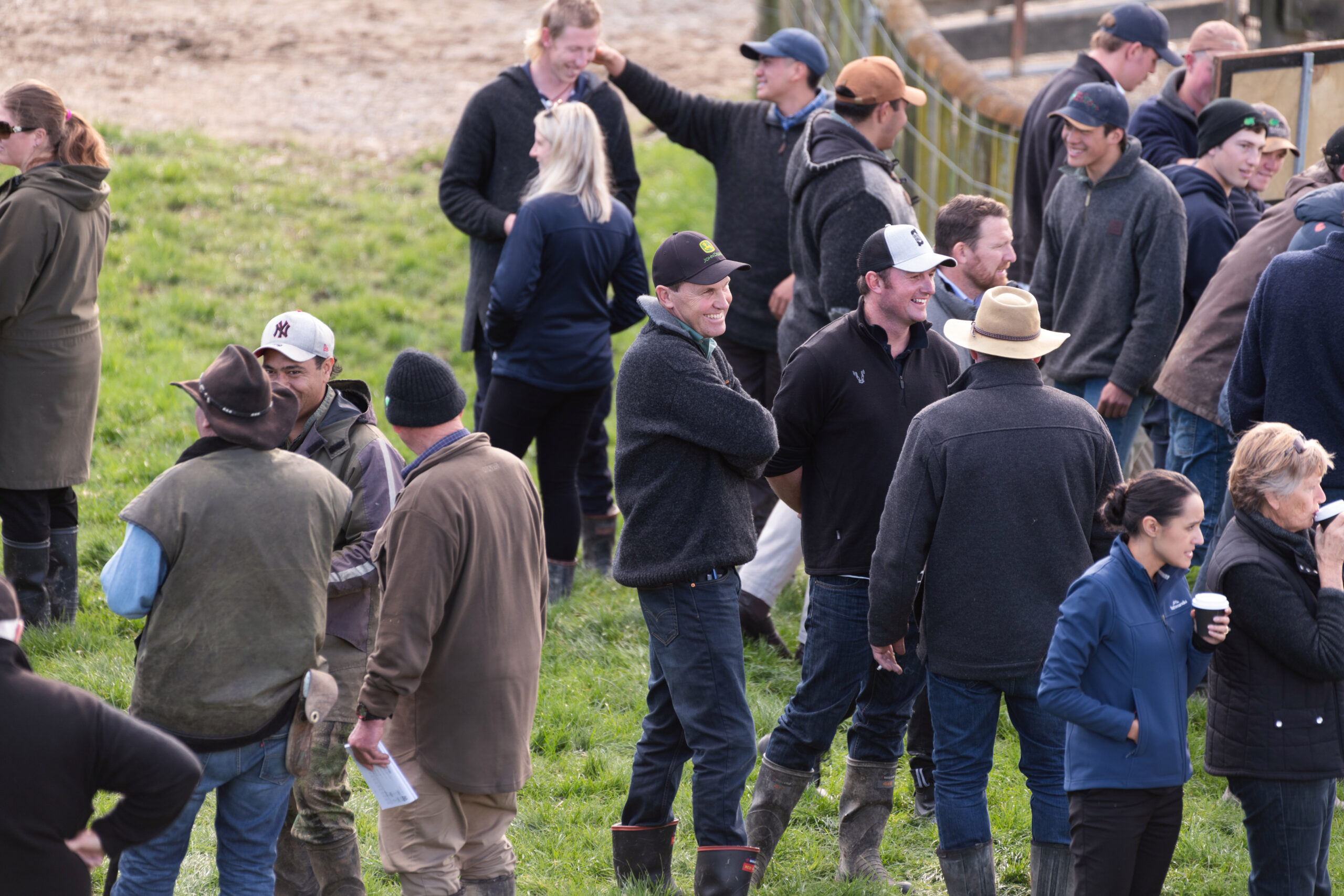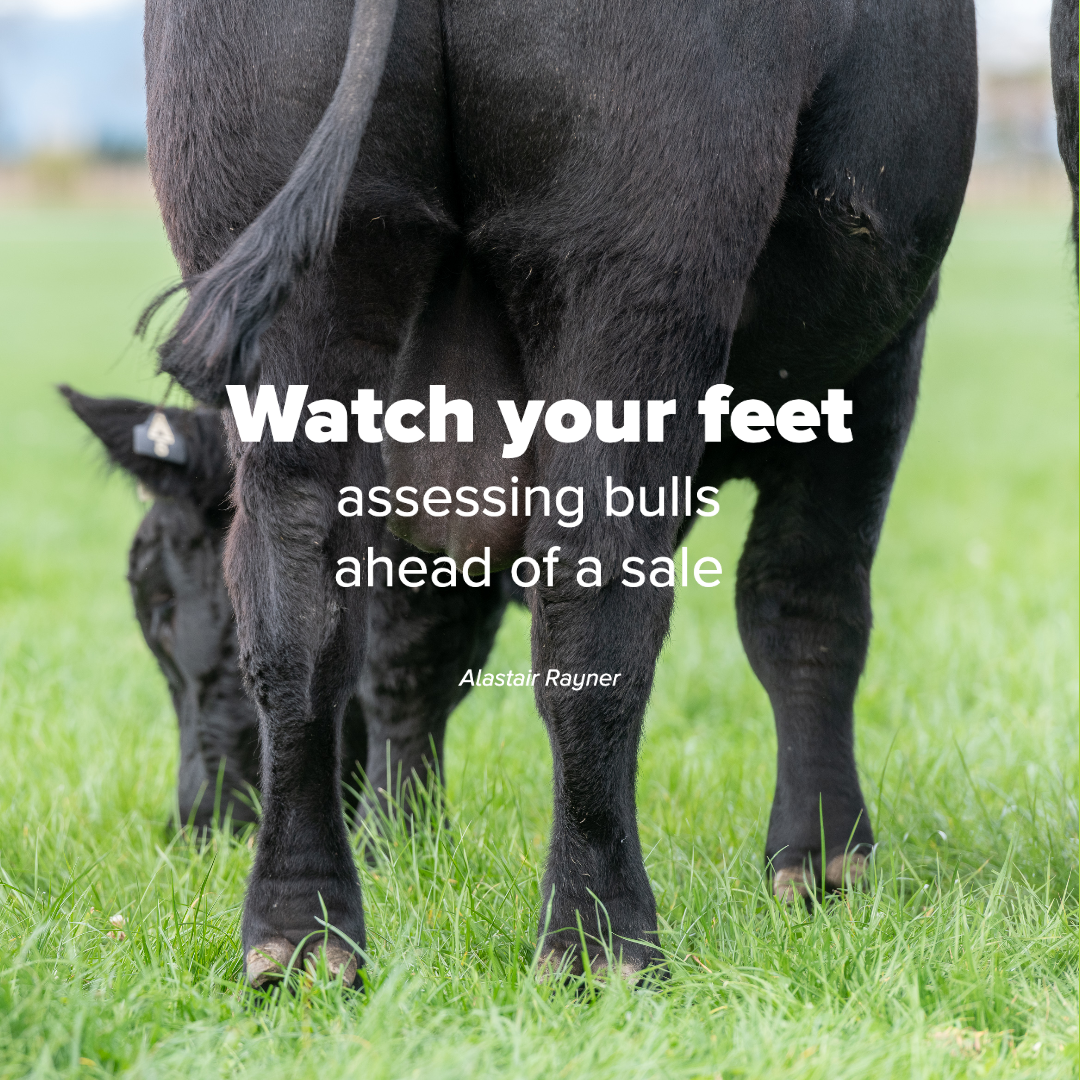Beef Central Genetics editor Alastair Rayner, 20/09/2022
SPENDING time assessing the feet and leg structure of bulls ahead of sale can be one of the most effective long-term investments into a herd’s future.
The ability of bulls to move freely, and to achieve regular and repeated matings across several joining seasons directly impacts on a herd, not to mention providing a return on investment in the first instance.
The appearance of feet in cattle are often a direct result of the overall leg and shoulder structure of the animal. Correct shoulder angles result in legs that are correctly aligned, with the front foot at a 45 degree angle to the ground.
When correctly aligned, the hoof should naturally allow wearing and avoid overgrowth. Uneven hooves are often an indication that pressure is unevenly placed on the foot, causing one side to wear away quicker than the other.

Aside from the effects of normal wearing, the growth (and shape) of feet are also influenced by the environment in which livestock are located, and by the feed type that they have been exposed to.
The combination of these factors, genetics, and environment (including nutrition) need to be considered carefully ahead of selection decisions.
Research into the factors behind bull breakdown conducted in Victoria highlighted 25.2pc of bulls three years and older as being unsound for breeding. A fair portion of these breakdowns (13.8pc) were due to locomotion issues. While these may not all have been directly associated with poor foot and hoof structure, the high proportion of bulls with the inability to walk and serve is a concerning trend.
While most bull buyers take time to assess bulls looking at feet, simply looking at a bull standing in a yard, or amongst other bulls jostling for space often prevents that assessment being as thorough as it should be.
As shoulders, legs, and hindquarter structure all impact on feet and growth of hooves, making bulls walk across a yard or longer space is highly recommended as part of the assessment. A few little steps isn’t sufficient to show much. A bull should be made to walk out for a reasonable length of distance.
In walking a bull this way, producers can assess how well he is placing his feet, and if there is even weight distribution across all four feet and across the claws of each foot. While walking, a mature bull can transfer as much as 200kg per hind keg, and 100kg per claw.
Bulls which roll their feet as they walk are incorrectly transferring this weight and this is a sure sign that over time feet issues may well start to become an issue. As much as 85pc of lameness occurs in hind feet, with weight transfer or breakdown due to incorrect structure in feet and pasterns.
Front feet are often impacted by incorrect shoulders, often by legs that cause feet to be out of alignment, either turned in or slightly turned out. These deviations can also cause a bull to roll when he walks and over time impact on hoof claw growth or in the longer term contribute to arthritis and movement restrictions.
Trimming
It is not unusual for hoof issues to be treated through hoof trimming. While trimming will correct the appearance of the hoof and often aid the animal to walk more easily, these are short-term corrections that impact only the individual bull.
As a potential herd sire, the genetic contribution of the bull to the herd is a risk to consider. Although heritability estimates of foot and leg structure suggest that the range is between 0.08 – 0.16, it is nonetheless a trait that should be factored into any selection decisions.
It is worth noting that research suggests the heritability of feet and legs to be at the level of 0.21. This has a positive correlation (+0.52) with herd longevity.
It may be that there are bulls presented for sale that have received some attention to feet with hoofs being trimmed pre-sale. Often this may be difficult to observe at a pre-sale inspection. However, making time to walk the bull out, assess the movement of the bulls, observing the placement of feet and the angle of feet will provide a lot of insight into the correctness and overall suitability of a bull to a herd.
Making the time to have a thorough inspection rather than a hasty one with the bull squeezed into a pen with several others pre-sale will pay dividends into the working life of the bull and as well as the overall longevity of the herd.

Alastair Rayner is the Principal of RaynerAg, an agricultural advisory service based in NSW. RaynerAg is affiliated with BJA Stock & Station Agents. He regularly lists and sell cattle for clients as well attending bull sales to support client purchases. Alastair provides pre-sale selections and classifications for seedstock producers in NSW, Qld and Victoria. He can be contacted here or through his website www.raynerag.com.au


